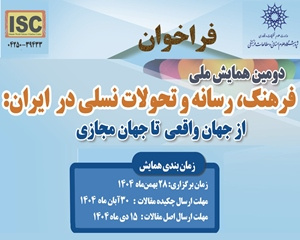ساختار حماسه ملی ایران بر مبنای نظریه ژرژ دومزیل (مقاله علمی وزارت علوم)
درجه علمی: نشریه علمی (وزارت علوم)
آرشیو
چکیده
در پژوهش های شاهنامه دو رویکرد عمده وجود دارد. یک گروه از پژوهش ها یک داستان واحد را در شاهنامه موشکافی می کنند؛ در حالی که گروه دیگر بر انسجام کلی داستان های شاهنامه تأکید دارند. این پژوهش که به روش توصیفی-تحلیل و با شیوه تحلیل ساختارشناسی انجام می گیرد، پیشنهاد می کند که حماسه ی ملی ایران داستان های پراکنده نیست بلکه از یک ساختار کلی که به دوره ی هندواروپایی بازمی گردد، پیروی می کند. بدین منظور پژوهش حاضر بر دو بنیان نظری استوار است: 1- طبق نظریه ی ژرژ دومزیل، کیهان هندواروپایی دارای نظم طبقاتی است. 2- به گفته بهمن سرکاراتی حماسه ملی ایران بر اساس طول عمر محدود جهان و رویارویی نیرو های خیر و شر به سه دوره تقسیم می شود. این مطالعه نشان می دهد که در دوره ی نخست، نظم اهورایی به شکل نظام طبقاتی نمود می یابد که به موجب آن سه گروه کارکردی مذکور در اندیشه ی دومزیل به ترتیب با سلطنت هوشنگ، تهمورث و جمشید شکل می گیرند و در دوره ی دوم، کام اهریمن به صورت بر هم خوردن نظام طبقاتی متجلی می شود.The structure of Iranian national epic based on George Dumézil’s theory
There are two common approaches in the research of Shahnameh. The first group of studies scrutinize one unique story of Shahnameh, while the other one emphasizes on the coherence of all the stories. In this research the Iranian national epic is interpreted using structuralism. It suggests that Iranian national epic is not a set of scattered stories, but basically it has an Indio-European style. To that end, present study embeds on two theoretical foundations: first, according to George Dumézil’s theory, Indo-European universe has a class system. Secondly, according to Bahman Sarkarati, Iranian national epic is classified into three eras based on limited age of the universe and a confrontation between the celestial and the evil powers. In the first era, celestial order became a class system with the rise of Hooshang, Tahmoores, and Jamshid dynasties; respectively, which agrees with George Dumézil’s theory of three functional groups. In the second era, an evil period is manifested through the destruction of the class system.








